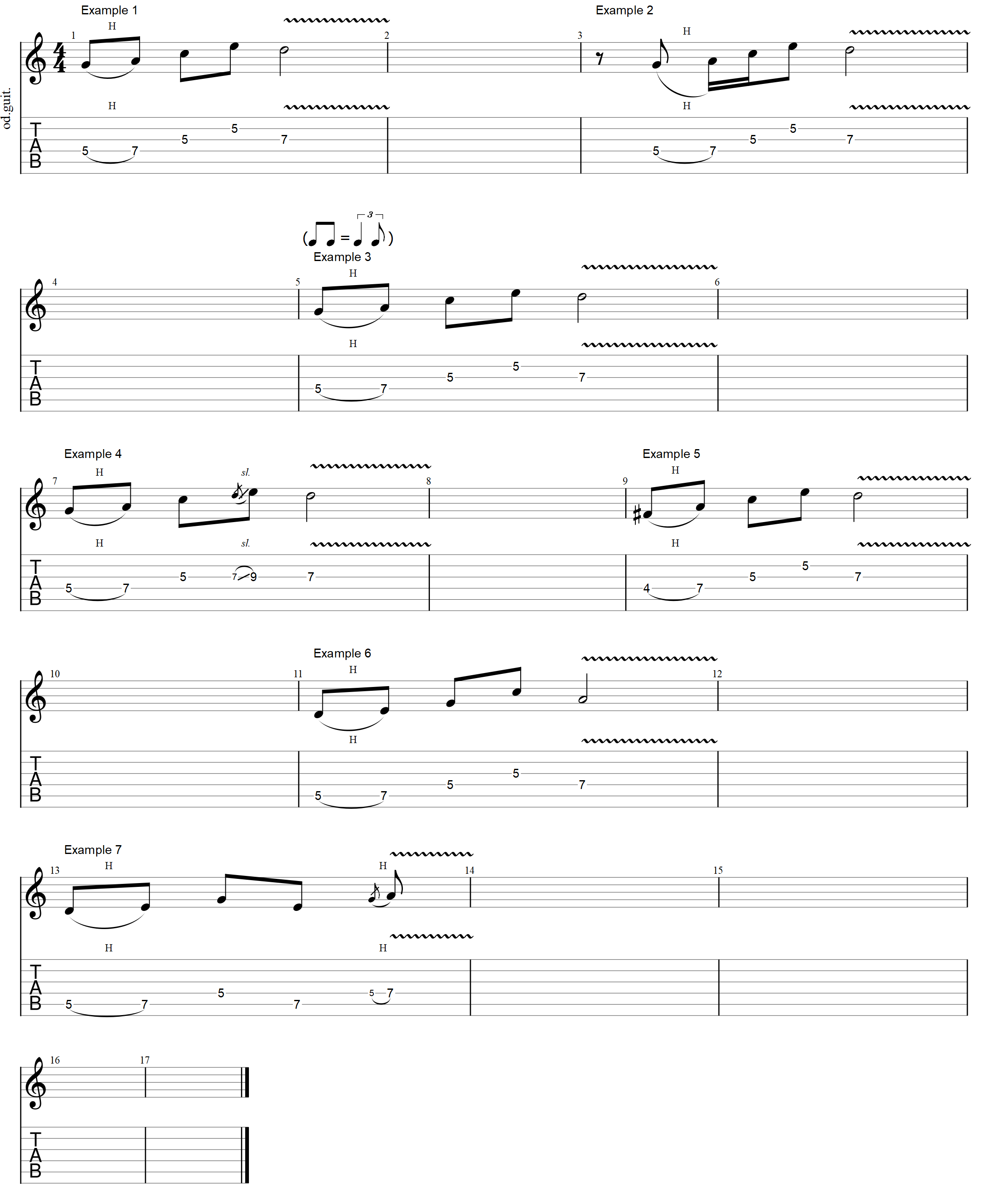
‘One Lick Challenge’
Creative Guitar Soloing
The old phrase ‘necessity is the mother of invention’ is one I think of often when practicing my guitar soloing and improvisation. By putting some kind of limit on our soloing practice, such as ‘you can’t use the D string’ or ‘you can only use double-stops’ (2 notes at the same time), we force ourselves to think differently. We have to be creative and find new ways to travel through familiar licks and scales. When we then return to normal soloing, the new pathways and ideas that we’ve acquired add variety and depth to our playing.
That is what gave me the idea for this ‘One Lick Challenge’. Below is a single Rock/Blues lick that is reworked 6 times using a different approach each time. There’s plenty more ways you could vary this lick, so please consider this blog a ‘part 1’ and an encouragement to take on the ‘challenge’ – how many ways can you rework this lick?
Listen to the audio below carefully, as some changes are subtle (eg. the change to swing rhythm in example 3). Notes for each example are also listed right at the bottom. Please do experiment and see what ideas you can come up with. Also, play with a backing track if possible – any A minor backing track will work. Technically, example 5 leaves the key of A minor slightly (to A Dorian), but an A minor backing track will still work well. Playing along to a track can help inspire ideas and add to the enjoyment.
Have fun and look out for part 2!
 Example 1: A fairly standard/basic Rock lick (with a hint of Mark Knopfler’s influence!)
Example 1: A fairly standard/basic Rock lick (with a hint of Mark Knopfler’s influence!)
Example 2: ‘Rhythmic displacement’ – when I repeat the lick I start it a 1/2 beat later (I also speed up the middle section of the lick to compensate). Delaying parts of licks like this is a great way to play with listener’s expectations. It keeps your rhythms from feeling too predictable and adds a funky, syncopated feel.
Example 3: Here, the lick is played with swing rhythm. A pretty simple approach but it still can have a significant effect on the feel of a lick. Swing rhythm is often a good fit for Blues and Jazz, although it can fit very well in all genres.
Example 4: The notes here are almost the same, but we are playing the 4th note of the lick in a new way. Instead of playing the note ‘E’ on the 5th fret of the B string, we are using a grace note slide from the 7th to the 9th fret of the G string. This 9th fret note is also ‘E’ so the lick is basically the same. Playing the same lick with a subtle change like this though, through adding techniques, varying dynamics etc., is an example of how you don’t need to ‘reinvent the wheel’ with every new thing you improvise. Subtle changes like this still add interest and can make your playing sound more detailed and professional.
Example 5: Another subtle change – the starting note here has shifted down a fret.
